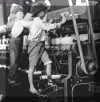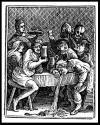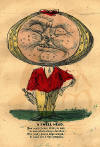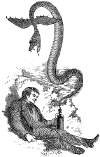|
What were the
negative effects of industrialization? |
 ·
Child labor ·
Child labor
Click image to enlarge |
Children often entered
the work force at age eight or nine because parents needed their
children's wages. They worked in coal mines, textile mills and
other factories. Without safety regulations, children were three
times more likely to hurt themselves than adults. |
|
·
Low wages, long hours |
10-hour workdays were common and wages were barely enough to live
on. Workers had no health coverage or
other benefits. |
|
·
Unsafe working conditions |
No regulations on safety. Frequent accidents occurred in
factories, especially involving children who might fall asleep or be less attentive.
A tragic fire at the Triangle Shirtwaist factory in N.Y. killed 141 seamstresses who were
unable to escape because exits were locked. |
|
How did workers respond to the negative
effects of industrialization? |
|
The effects of industrialization led to the rise of organized labor
and
important workplace reforms. |
|
Rise of organized labor:
·
Formation of unions—American Federation of Labor
|
AFL
pushed for issues like higher wages, shorter hours, and better
working conditions. It was strongest in the skilled trade, not the
factories. Preferred bargaining over strikes. |
|
 ·
Strikes—Homestead Strike ·
Strikes—Homestead Strike
1892 - Illustrated Weekly - Labor troubles at Homestead, PA -
Click to enlarge
|
In the
late 1800's, strikes occurred all the time, often ending in violence
and little gain for the workers. In 1892, 13 men were killed in a
battle between striking steelworkers and strikebreakers at Carnegie's Homestead steel plant
in Pittsburgh.
The strike turned many Americans against unions and organized labor,
which they blamed for the violence. |
|
How did the reforms of the Progressive
Movement change the United States? |
|
Progressive Movement workplace reforms:
·
Improved safety
conditions
|
Progressive Movement -
includes different reform movements that dealt with problems caused
by massive immigration, urbanization, and big business. Reformers
wanted laws to protect workers and poor people, to reform government
and to regulate business.
Resulted in laws
passed passed by states making employers legally responsible if their workers
were injured or killed on the job. |
|
·
Reduced work hours
|
States
gradually began to reduce work hours, especially for women and
children. |
|
·
Placed restrictions on
child labor |
States started to place restrictions on child
labor, though some of the state laws were declared unconstitutional
by the Supreme Court. |
|
What were the results of the women's suffrage movement? |
Women’s suffrage:
·
Increased educational opportunities
|
By
1900, one-third of college students were women. Educated women began
demanding the right to vote. |
|
·
Attained voting rights
|
Growing numbers of educated women were becoming angry that they
could not vote. In large cities, women campaigned hard for
suffrage, and gradually more and more states allowed women to vote.
The important role played by women workers in World War II tipped
the balance in favor of granting women suffrage. |
|
·
Women gained the right to vote with passage of
the
19th Amendment
to the Constitution of the United States of America. |
In
1920, the 19th Amendment was adopted. It made it illegal for any
state or for the federal government to deny women the right to vote. |
 ·
Susan B. Anthony
worked for women’s suffrage. ·
Susan B. Anthony
worked for women’s suffrage. |
During
the 1800's, Anthony was one of the leaders of the women's suffrage
movement, and fought for women to win the right to vote. |
|
What was the Temperance Movement? |
|
·
Composed of groups opposed to the making and
consuming of alcohol
|
Temperance Movement - wanted to limit or ban the use of alcohol.
Thought drinking was a serious threat to family life. Mostly
Protestants. Associated drinking with Irish Catholics. |
|
·
Supported
18th Amendment
prohibiting the manufacture, sale, and transport of alcoholic
beverages
|
18th
Amendment, banning manufacture or sale of alcohol, adopted in
1919. |
|
|






